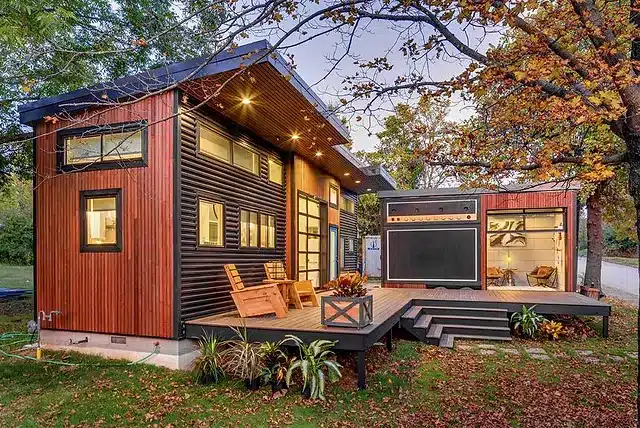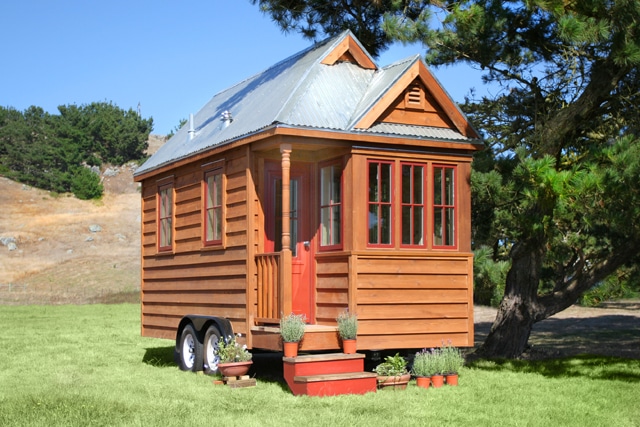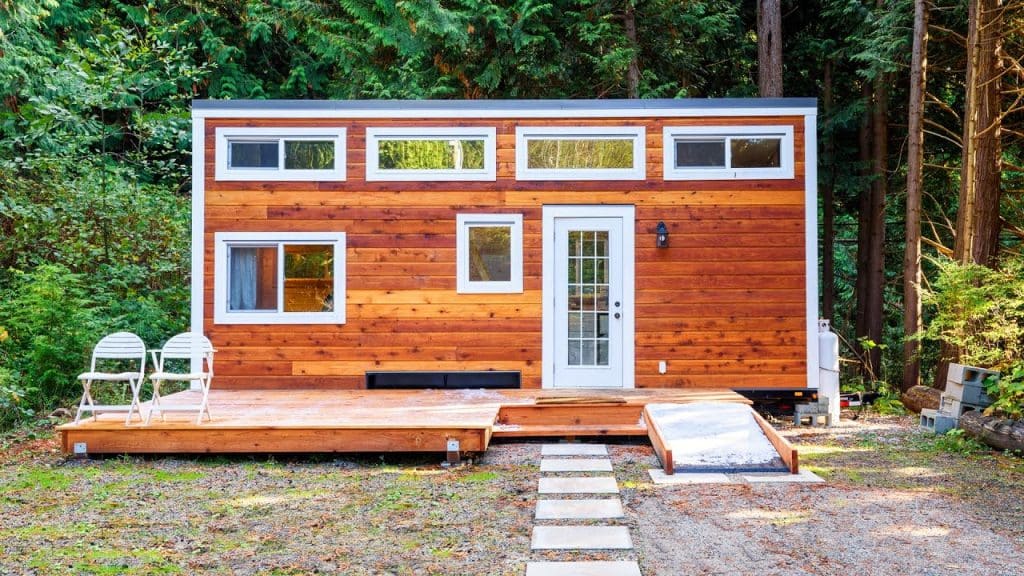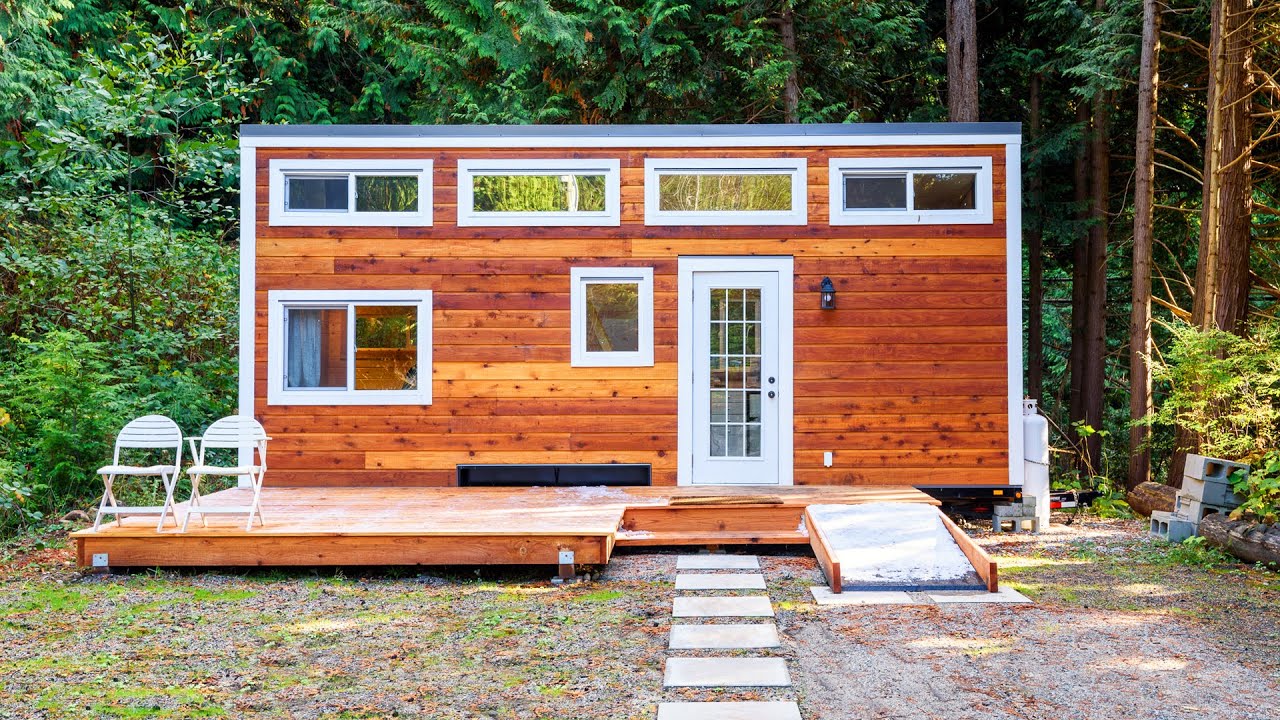The Tiny Homes Movement: Living Large in Small Spaces
Tiny homes have become an increasingly popular housing option over the past decade. These small dwellings, typically under 500 square feet, offer an appealing combination of affordability, sustainability, and freedom. As the tiny house movement continues to grow, more people are embracing the motto that small can be beautiful. The appeal of tiny homes is multifaceted. For starters, they provide an affordable way to own your own home. With median home prices in the U.S. over $400,000, homeownership is out of reach for many Americans. Tiny houses, on the other hand, can cost just a fraction of that price. You can buy a prefabricated tiny home for as little as $50,000 or build your own for even less.

The small space means lower utility bills as well. Heating and cooling a couple of hundred square feet uses far less energy than a 2,000 square-foot McMansion. Tiny homes are also praised as an eco-friendly housing option. Their small size means fewer resources are needed for construction and less energy is required for heating and cooling. Tiny house owners have a lighter environmental footprint, both in terms of the materials used to build their home and their ongoing energy needs.
The portability of tiny houses also promotes sustainability by allowing homes to be moved instead of demolished when it’s time for a change of scenery. For many tiny house enthusiasts, the movement is about far more than just affordable and sustainable housing. It’s about a lifestyle that values freedom and mobility over material possessions. Tiny homes are designed to have a minimalist aesthetic. There is no room for clutter and non-essentials.
This forces owners to consider what is most important. Once finished, tiny houses can be easily towed from place to place on a trailer. This mobility fuels the spirit of adventure and allows people to more easily follow new opportunities and passions.
The Definition of a Tiny House
Tiny houses come in all shapes and sizes, but they generally share some common traits. The most salient feature is a footprint under 500 square feet. Many tiny homes come in between 100 and 400 square feet. For reference, the average American home is over 2,500 square feet. So we’re talking about houses that are roughly 5-25% the size of an average home. In addition to their small size, most tiny houses are built on trailers, making them easily movable. They also typically have an open floor plan to maximize the use of the limited space. Tiny homes are most often powered by electricity, sometimes supplemented by solar panels or other off-grid power sources. Unique storage solutions like lofted beds, built-in cabinets, and convertible furniture help make the most of the available space. While tiny houses can technically be site-built, most are prefabricated or built from a DIY kit. Prefab allows for faster construction, lower costs, and easier mobility. DIY building kits are popular with hands-on homeowners who want to customize their designs.

Whether prefab or DIY, tiny houses tend to have a minimalist, modern aesthetic with clean lines and neutral colours. Here are some other common characteristics of tiny homes:
- Under 500 square feet
- Built on a trailer for mobility
- Open floor plan
- Lofted bed to save space
- Multi-functional and convertible furnishings
- Prefab or DIY construction
- Minimalist design with neutral colours
- Powered by electricity (+ solar, etc.)
- Creative storage solutions throughout
While tiny houses are defined in part by their small size, it’s their emphasis on mobility, simplicity, sustainability, and affordability that sets them apart. They offer an alternative to traditional site-built homes that can be customized to match each owner’s priorities and lifestyle.
The Reasons Behind the Tiny House Movement
The tiny house movement has been gaining steam since the early 2000s, but it really took off after the Great Recession of 2008. Here are some of the major reasons behind the growing popularity of tiny homes:
Affordability With housing costs skyrocketing, tiny houses offer an affordable path to homeownership. Tiny homes can cost just a fraction of a typical house to build or buy. Their small size also means reduced taxes, utility bills, and maintenance costs over time.
Financial Freedom Tiny living leads to reduced expenses and greater financial freedom. Without a large mortgage or high rent payments, people can save more money, retire earlier, or pursue less lucrative career paths. Some tiny house owners are able to achieve complete financial independence.
Minimalism & Sustainability The tiny house ethos embraces minimalism and living with less. The limited space forces owners to consciously choose what they need. Tiny living is also praised as a sustainable housing choice that uses fewer resources for construction and operation.
Mobility & Freedom Built on trailers, tiny houses offer the freedom to move wherever you want. This mobility allows owners to more easily change jobs, travel, or just experience new communities and scenery.
Individuality & Customization Tiny homes are highly customizable, allowing people to design a home tailored exactly to their needs and personality. Tiny house owners take pride in their unique tiny abodes.
Community The tiny house community shares knowledge, hosts events, advocates for legalization, and provides a sense of belonging. Shared values of sustainability and freedom unite the movement. While the reasons vary from person to person, most tiny house enthusiasts cite some mix of affordability, customizability, sustainability, minimalism, and freedom. The tiny house movement is as much about lifestyle as it is about housing.
The Challenges of the Tiny House Lifestyle
While tiny houses offer many benefits, small-space living also comes with some distinct challenges.
Here are some of the most common obstacles faced by tiny house owners:
Zoning Restrictions One of the biggest hurdles for the tiny house movement is restrictive zoning and building codes. Most local governments place minimum size requirements on homes that effectively prohibit tiny houses. Advocates are working to change codes, but limitations remain.
Financing Difficulties It can be hard for buyers to get traditional financing for tiny homes. Most banks are hesitant to underwrite mortgages for such small, non-conventional properties. All-cash purchases are common, limiting the pool of buyers.
Limited Space A tiny home’s small footprint means owners must make smart use of every inch and limit possessions. Challenges include storage, having just one or two rooms, and downsizing belongings.
Access to Utilities Connecting to water, sewer, and electric utilities can be tricky. Most tiny homeowners rely on the utilities of an RV park or trailer site. Off-grid options work too but require more systems.
Types of Tiny Homes
- On wheels – These tiny homes are built on trailers for maximum mobility. They can be towed to different locations.
- Stationary – Tiny houses built on permanent foundations like any regular home. Cannot be moved but may have an easier time meeting building codes.
- Prefab – Constructed offsite by a company and delivered finished. Quick and affordable but with less customization.
- Custom built – Designed and built onsite to the homeowner’s exact specifications. More expensive but fully customizable.
Notable Builders & Manufacturers
Some well-known tiny home builders include Tumbleweed Tiny House Company, Tiny Heirloom, and Tiny Home Builders. There are many manufacturers and builders to choose from.
Costs
Costs vary greatly. Prefab tiny homes can start at around $50,000. Custom-built tiny homes often range from $60,000-$100,000. The size, features, and materials impact costs significantly.
Foundation Types
- Trailer – More common and allows mobility but can be less stable and harder to insure/finance.
- Permanent – Easier approval for loans and insurance but loses mobility. Must meet all building codes.
Off-Grid Options
Solar, composting toilets, rainwater collection, and propane can allow tiny homes to operate off-grid. It requires more systems but enables placement almost anywhere.
Layouts & Features
Common tiny home layout features include lofts, convertible furniture, built-in storage, multi-purpose spaces, open floor plans, and space-saving stairs/ladders. Layouts leverage vertical space.
Financing & Insurance
Financing tiny homes can be challenging as they are seen as non-conventional. Often need all cash or non-traditional lending. Insurance was also difficult but possible by bundling with land or finding specialty providers.
Here are some of the most notable tiny home builders and manufacturers:
- Tumbleweed Tiny House Company – One of the most well-known and largest tiny home builders in the US. They offer several models that can be customized.
- Tiny Heirloom – Specializes in unique, high-end tiny homes with lots of customization options. Known for their excellent craftsmanship.
- Minimalist – A Canadian company offering modern, minimalist tiny homes. Very popular for their elegant and efficient design.
- Mustard Seed Tiny Homes – Fast-growing builder known for high-quality homes at relatively affordable prices, starting around $50,000.
- Bantam Built – Small custom builder focused on crafting premium tiny homes with lots of amenities. Higher end price point.
- Rocky Mountain Tiny Houses – Known for more budget-friendly models, offering tiny homes starting under $40,000.
- Oregon Cottage Company – Leading West Coast builder crafting tiny homes with a focus on sustainability and energy efficiency.
- Indigo River Tiny Homes – Texas-based builder featuring farmhouse-style tiny homes on wheels. Can be shipped nationwide.
- Tiny Home Builders – One of the first and most established tiny home companies, located in Colorado. Offers DIY resources.
- Wheelhaus – Specializes in modern, contemporary tiny homes with sleek, innovative designs. Based in Colorado.
Overview of the Tiny Homes Movement in Canada
- The tiny homes movement aims to downsize living spaces and embrace minimalist living. It has grown in popularity in Canada in recent years.
- Tiny homes are typically under 400 square feet. They come in many forms – on wheels, stationary, prefabricated, or custom-built.
- Benefits of tiny homes include affordability, sustainability, and freedom/mobility. Challenges include zoning laws, building codes, utility access, and financing.
- Several cities like Edmonton and Vancouver have started to change zoning rules to allow tiny homes. But regulation remains a key obstacle in most places.
- Groups like the Tiny Home Alliance Canada advocate for legalizing tiny homes as an innovative affordable housing solution.

Tiny Homes in Toronto
- Toronto has some “tiny home” developments like Tiny Town in the east end. But overall the movement remains fairly small.
- Zoning laws in Toronto make it difficult to build or place tiny homes, with requirements for minimum widths and connections to city utilities.
- Advocates hope to change local laws to permit tiny homes as affordable options for first-time home buyers or downsizing retirees.
- Some see tiny homes as a solution for Toronto’s homeless population. But uptake has been limited due to regulatory barriers.
- If zoning and building codes evolve to accept tiny homes, Toronto could see more interest and adoption of this trend. But progress has been slow so far.
The Tiny Life: Assessing the Trade-Offs
The tiny house movement offers some clear benefits – affordability, sustainability, mobility, and the appeal of a minimalist lifestyle. But small space living also comes with distinct challenges like limited space, zoning restrictions, utility access issues, and building code compliance.
While tiny homes present a compelling option for some, they require significant effort and sacrifice. Assessing your priorities and making compromises is necessary. Not everyone may be willing to downsize their possessions, tow their home frequently, or limit their living space.
If you highly value freedom, sustainability, and budget-friendly housing, a tiny home could be right for you. But if you prefer space, permanence, and convenience, traditional housing may be a better fit. There are reasonable arguments on both sides.
In the end, the tiny life is not for everyone. But for some, the rewards outweigh the trade-offs. Tiny houses offer the opportunity to consciously choose a lifestyle aligned with your goals and values. With eyes wide open to the pros and cons, you can determine if going tiny is the path to happiness and fulfillment.
